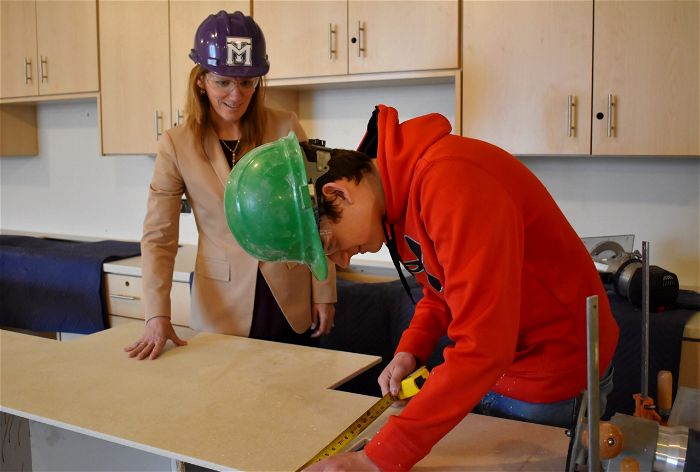First of a series of blogs exploring equity in career and technical education.
Career and technical education (CTE) has become the “next best thing” in high school reform. Lately, it’s been on the radar of governors, legislators, education commissioners, and business leaders who want to improve the match between what high school graduates know and the skills employers need. Expanding CTE can help them build the talent required to attract new jobs to their regions and create economic opportunity for their citizens. (This blog focuses on federal Perkins-funded high school CTE programs.)
The best of CTE combines rigorous academics and career-focused learning, including employer-supervised learning in the workplace. It prepares young people for postsecondary and career options that promote economic advancement and expand opportunity. For example, the regional vocational high schools in Massachusetts prepare students for college and careers so well that a number currently have substantial waiting lists. But not all CTE programs are created equal in quality and accessibility for students of all backgrounds.
JFF has high hopes for today’s CTE. But this “next big thing” carries risks too: the potential for the insidious continuation of tracking students rather than offering choices from the widest range of possibilities. Historically, schools, not families, made placement decisions for students, often based on biased notions of who was college bound and who couldn’t make the grade. Tracking still occurs-not just in CTE—and adversely impacts low-income students and youth of color who graduate from high school so poorly prepared that they end up in low-wage fields without career ladders and, increasingly, without employee benefits.
To identify high-quality and equitable CTE, we urge everyone to ask the following 10 questions when reviewing, reforming, or starting a CTE program:
- Is the program’s or school’s message to all students that CTE is a pathway into college?
- Does the CTE program prepare students for and offer a range of college credit-bearing dual enrollment and/or AP courses in science, computer science, math, and the like?
- Are the CTE program offerings a mix of the old trades (which now require sophisticated math and computer literacy) and high-growth fields, such as cybersecurity, nursing, and engineering?
- Is the CTE student body socioeconomically and racially diverse? Are the CTE teachers and employers racially and ethnically diverse?
- Are CTE students’ aspirations based on well-informed decisions, not demographics, and do they reflect the full spectrum of postsecondary options, including apprenticeship, certifications, community college, four-year institutions, and beyond?
- With which higher education institutions does the CTE program/school have partnerships?
- Do CTE students complete all the foundational discipline courses required to enter a four-year college, should they wish to do so?
- Does the CTE program provide high-quality work-based learning experiences supervised by employers and include time for learning from work?
- Are students learning transferable skills that will serve them well in the innovation economy?
- Are the outcomes of CTE measured according to appropriate criteria?
What Do We Really Know About CTE Outcomes?
The best CTE research in the United States comes from Shaun Dougherty’s 2016 study using Arkansas data, Career and Technical Education in High School: Does It Improve Student Outcomes? This research echoes what other studies have found: a positive relationship between CTE course taking and increased high school graduation rates, higher college enrollment rates, and higher wages. These effects are strongest for males and low-income students.
A second study of CTE schools in New York City reports similar findings and shows particular gains for students of color: “New York City public high school students enrolled in Career and Technical Education (CTE) schools, which typically serve low-income students and students with below average 8th grade test scores, are much more likely to graduate than their peers in non-CTE schools. Black and Latino male students in CTE schools, who traditionally have the lowest high school graduation rates and are often the target for city-funded programming, showed the greatest graduation gains.”
Let’s Discuss: New Series Will Dive Deeply into Equity, CTE, and Career-Focused Learning
In future blogs for this series, we will further explore the relationship between CTE and equity. We’ll profile several CTE programs and schools with thoughtful and even exciting answers to the questions above. We hope you will join us for this important discussion. Also, please let us know about career-focused programs that have strong outcomes for youth of color and low-income and rural students. Tell us about new research on this hot topic. We look forward to hearing from you!
Nancy Hoffman is a senior advisor at JFF and co-founder of the Pathways to Prosperity Network. Cassius Johnson, vice president of organizational strategy and policy, and Amy Loyd, associate vice president of building educational pathways for youth, also contributed to this blog.





